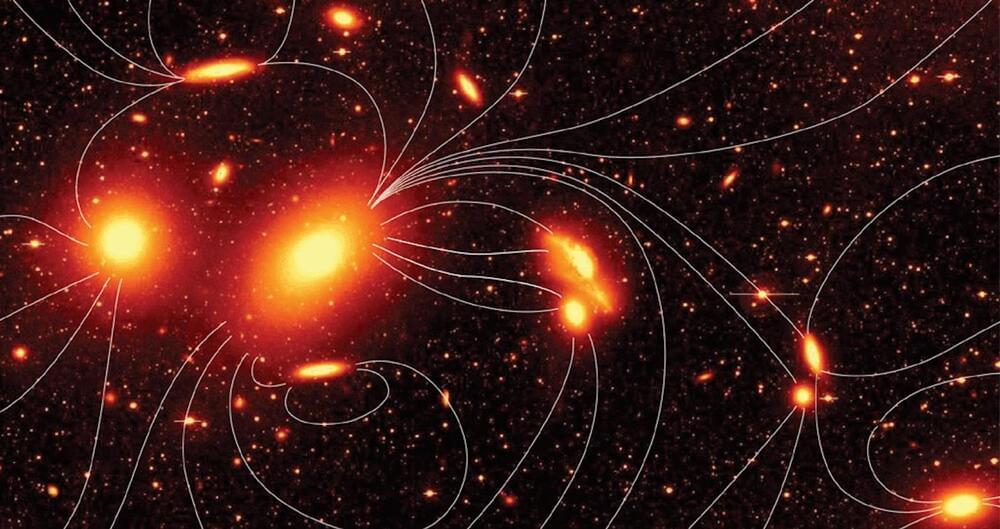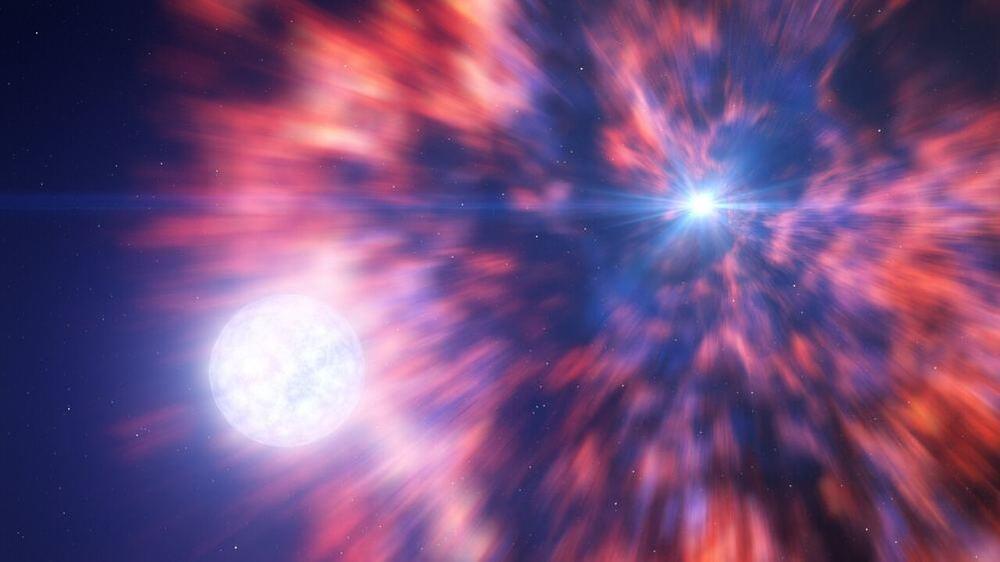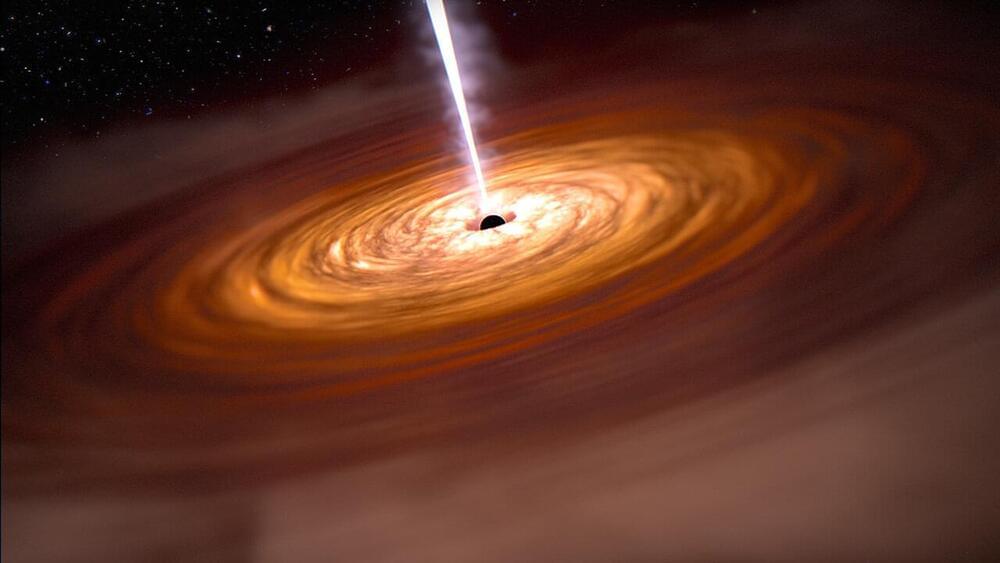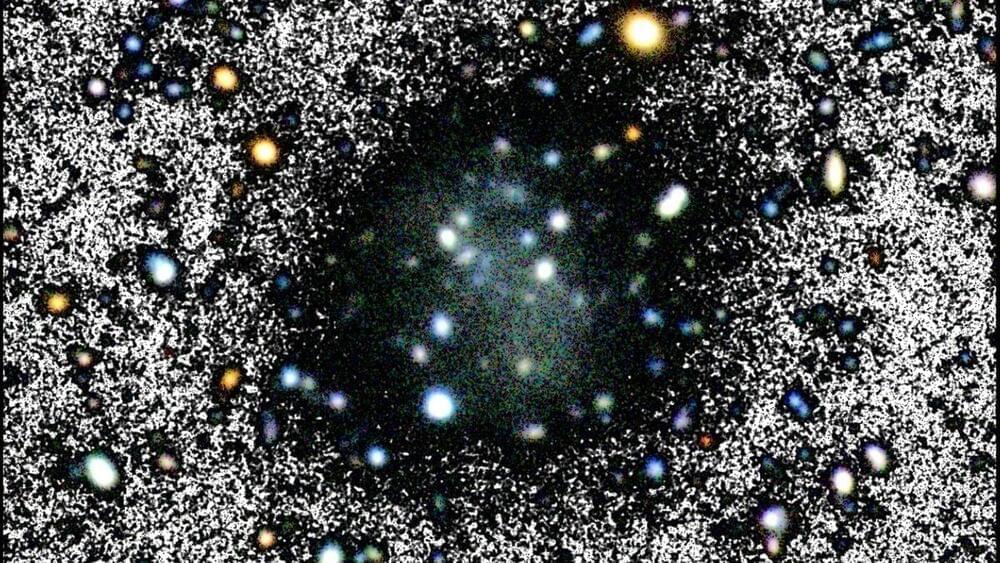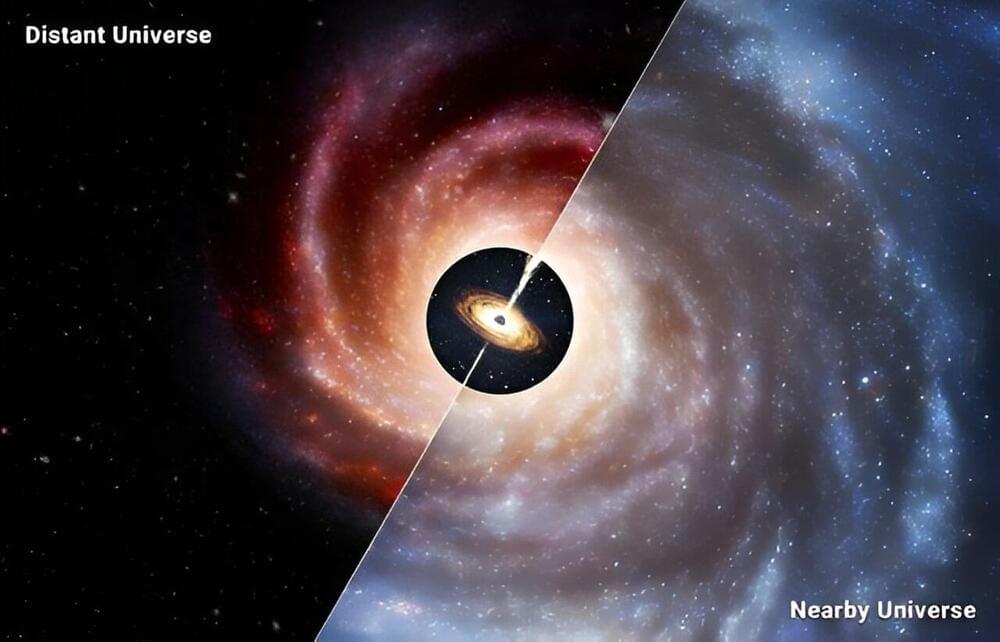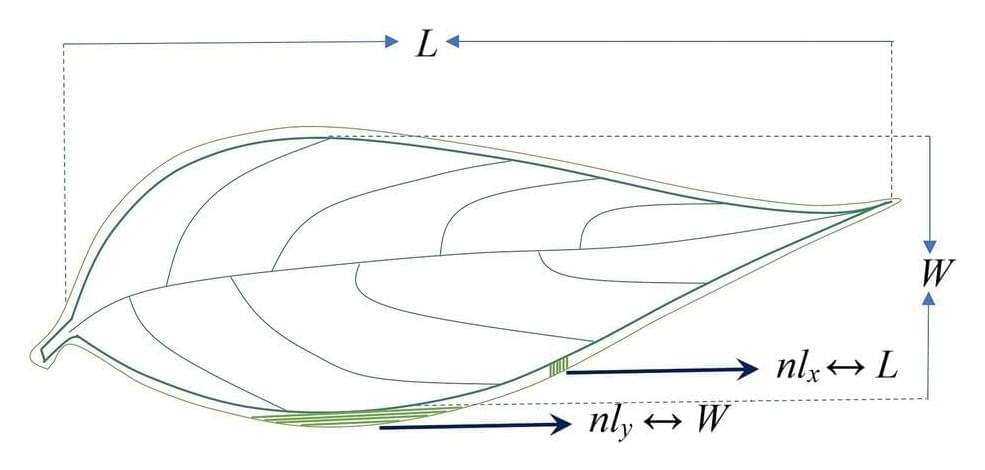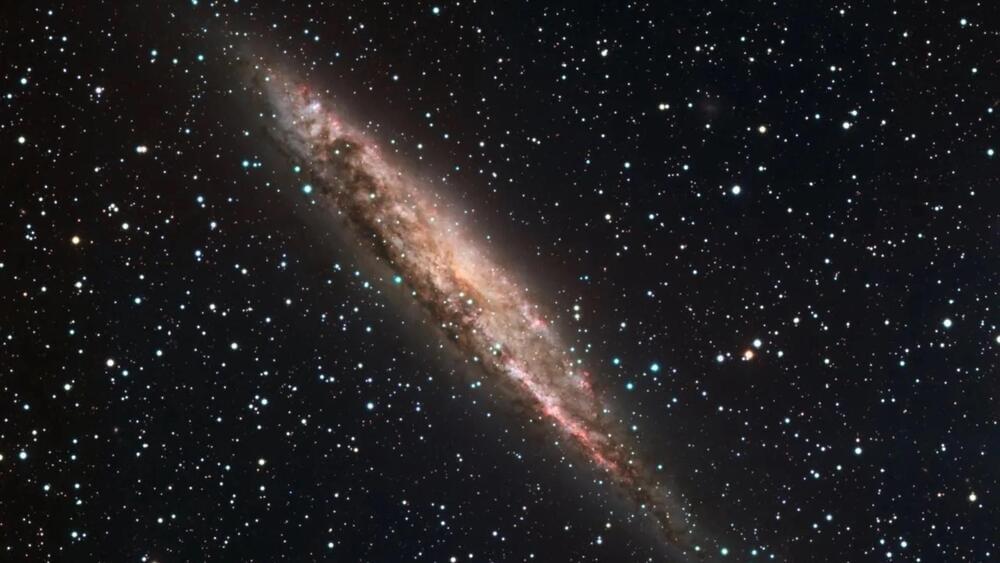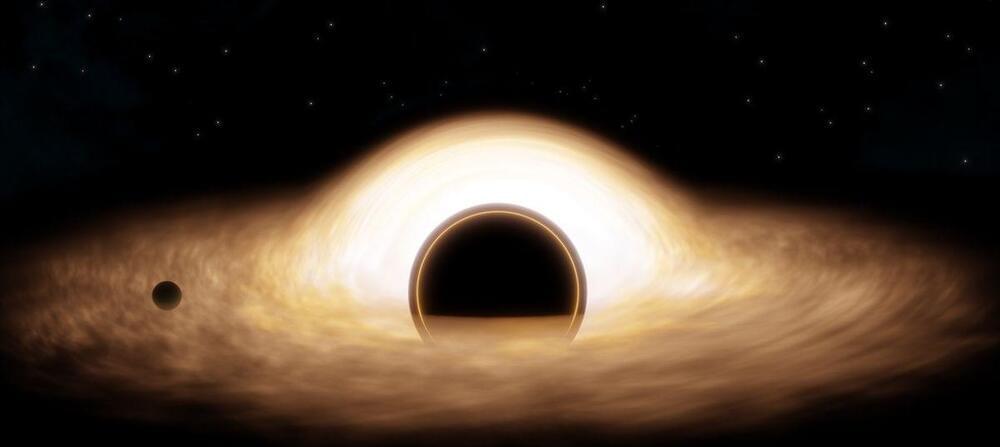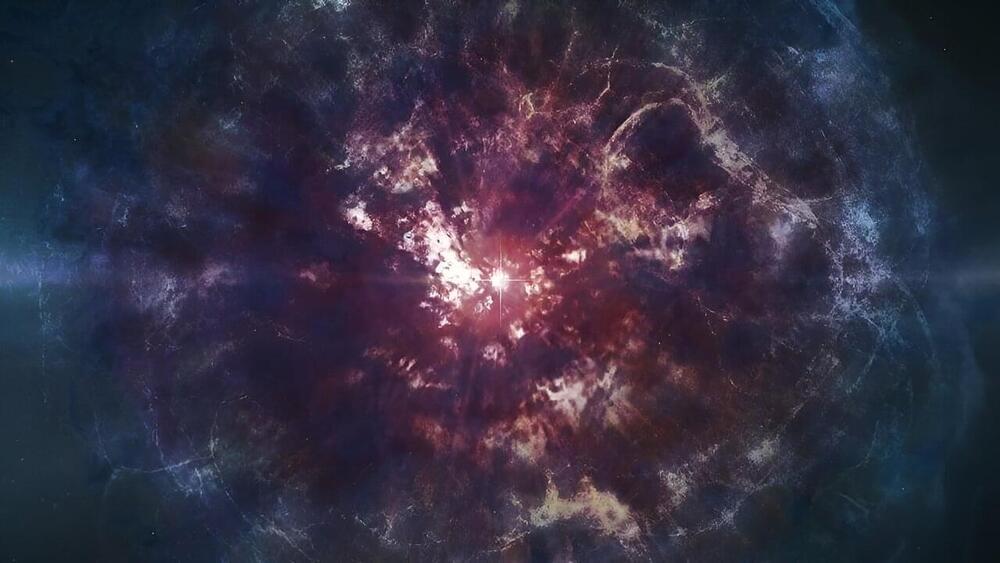Jan 15, 2024
Dark Matter Could Map the Universe’s Early Magnetic Fields
Posted by Dan Breeden in category: cosmology
So the idea is that intergalactic magnetic fields would tend to cluster electrons and ionized intergalactic hydrogen along their field lines, making those regions of the intergalactic voids just slightly denser than the rest of the void. This would cause dark matter to cluster a bit along the field lines as well. The gravitational effect would be extremely tiny, but over the entire history of the Universe, it would add up. So if primordial magnetic fields did form in the early Universe, tendrils of dark matter should be present along the same lines.
In a recent work in Physical Review Letters the authors argue that this effect would produce minihalos of dark matter. Just as galaxies are surrounded by a halo of dark matter due to gravitational clustering, faint halos of dark matter should exist around primordial magnetic field lines to do the gravitational tug of ionized matter along the field lines.
What’s interesting about this idea is that over time the charged ions and electrons would interact with the primordial magnetic fields and tend to cancel them out. The ions and electrons could even merge to create neutral hydrogen, so in the modern Universe, there would be no trace of these early magnetic fields in regular matter. But the microhalos of dark matter would still exist, and they could be seen through the gravitational lensing of distant light sources. These tendrils of dark matter could be the only evidence remaining of the earliest magnetic fields in the cosmos.
